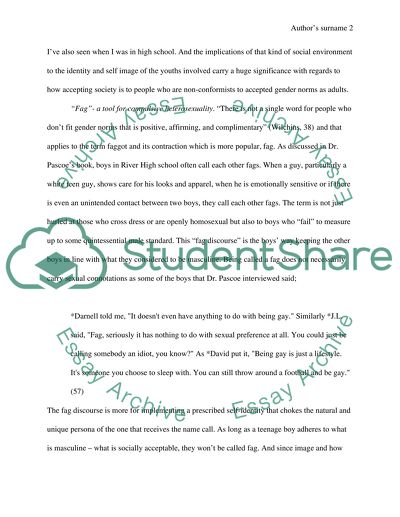Cite this document
(“Dude You're A Fag: Maculinity and Sexuality in High School Book Report/Review”, n.d.)
Dude You're A Fag: Maculinity and Sexuality in High School Book Report/Review. Retrieved from https://studentshare.org/anthropology/1497579-dude-you-re-a-fag-maculinity-and-sexuality-in-high
Dude You're A Fag: Maculinity and Sexuality in High School Book Report/Review. Retrieved from https://studentshare.org/anthropology/1497579-dude-you-re-a-fag-maculinity-and-sexuality-in-high
(Dude You'Re A Fag: Maculinity and Sexuality in High School Book Report/Review)
Dude You'Re A Fag: Maculinity and Sexuality in High School Book Report/Review. https://studentshare.org/anthropology/1497579-dude-you-re-a-fag-maculinity-and-sexuality-in-high.
Dude You'Re A Fag: Maculinity and Sexuality in High School Book Report/Review. https://studentshare.org/anthropology/1497579-dude-you-re-a-fag-maculinity-and-sexuality-in-high.
“Dude You'Re A Fag: Maculinity and Sexuality in High School Book Report/Review”, n.d. https://studentshare.org/anthropology/1497579-dude-you-re-a-fag-maculinity-and-sexuality-in-high.


